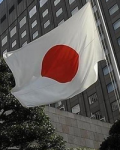-
Singapore’s Shenzhen - Iskandar a glimpse of the future for many
September 25, 2014
REALITY bites. Singapore is running out of land, population growth is continuing. The nearby option – for both workers and retirees – is Malaysia’s emerging Iskandar development, just across the Straits of Johor, where lower housing and schooling fees beckon . . .





